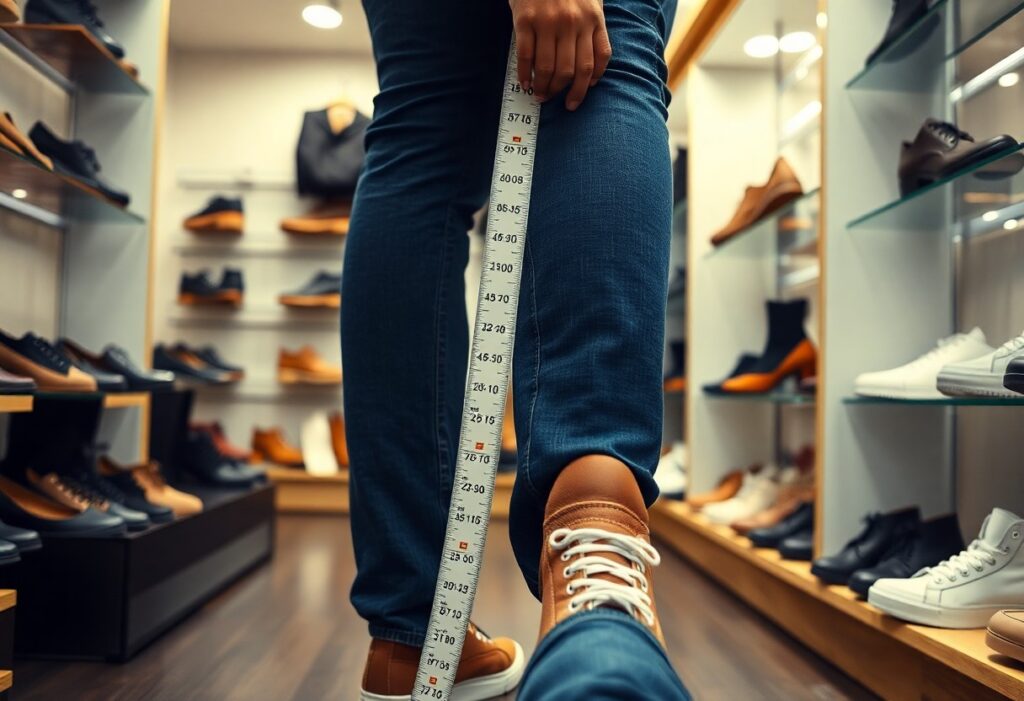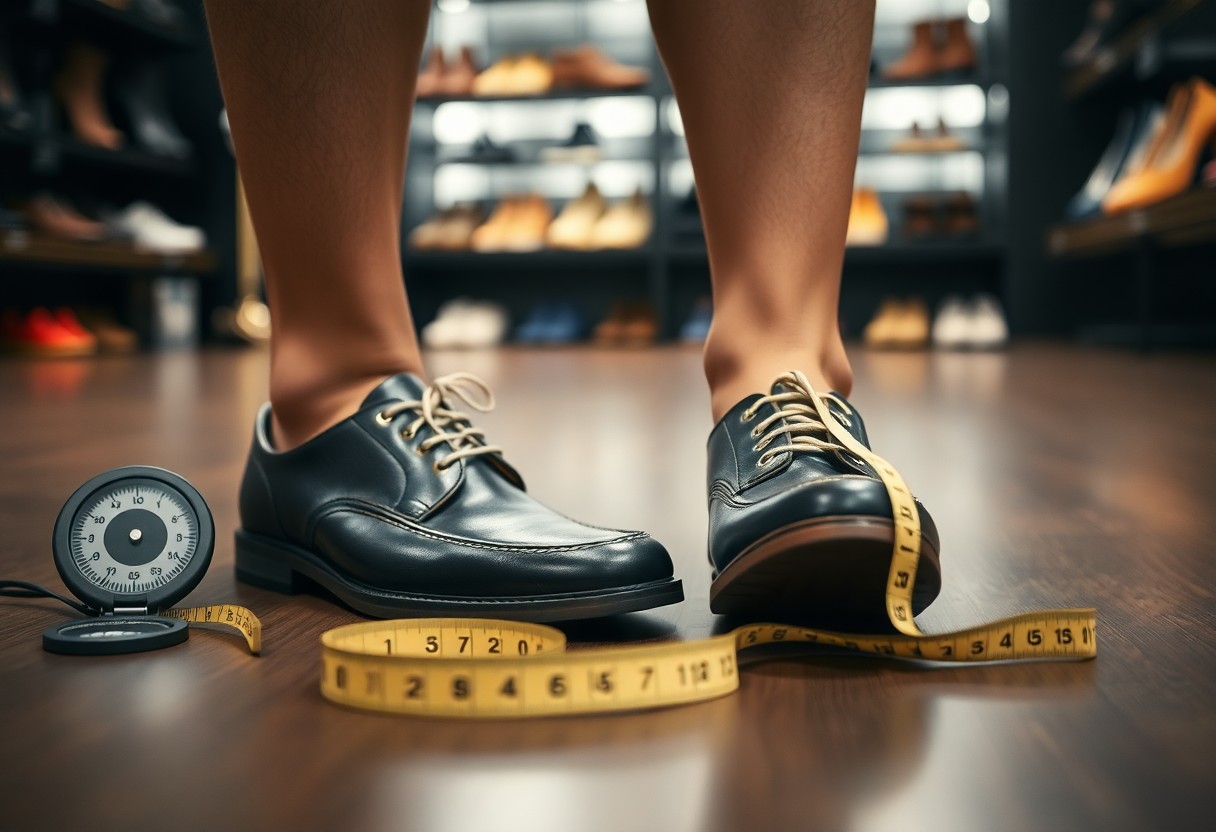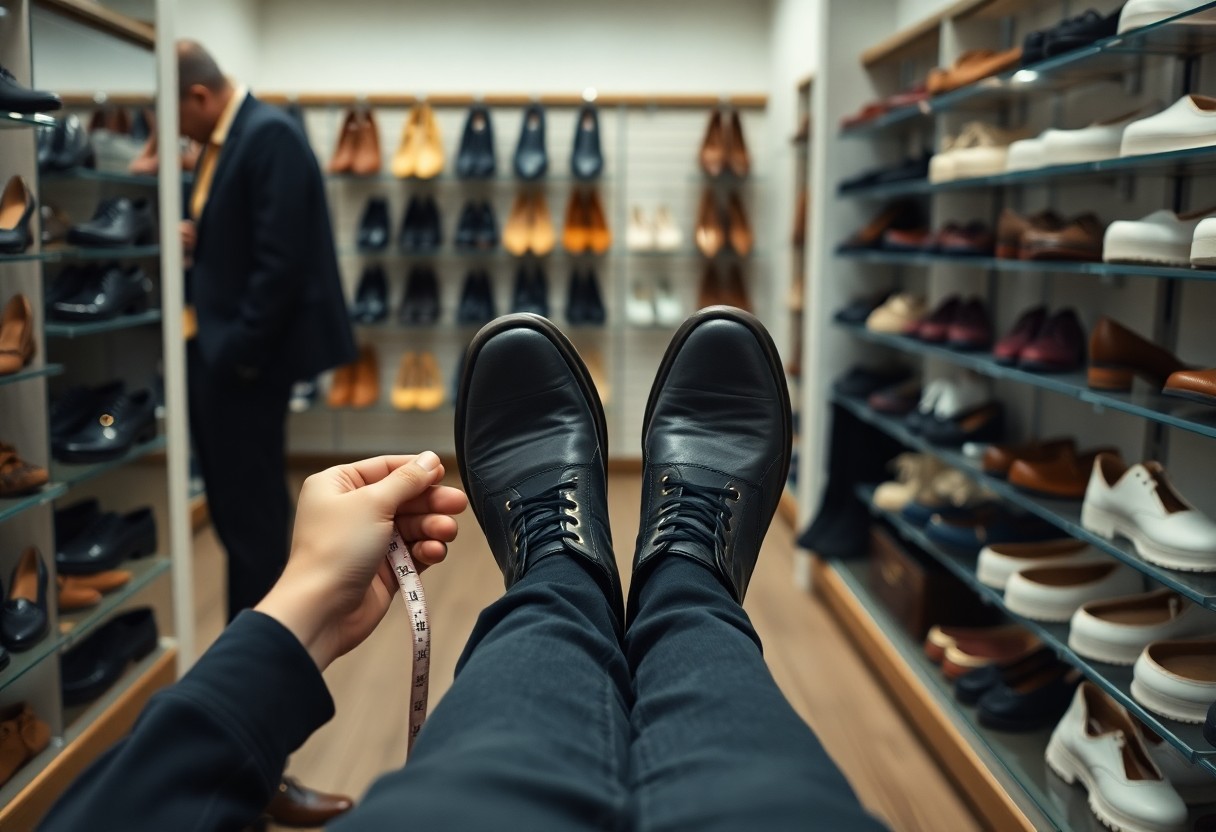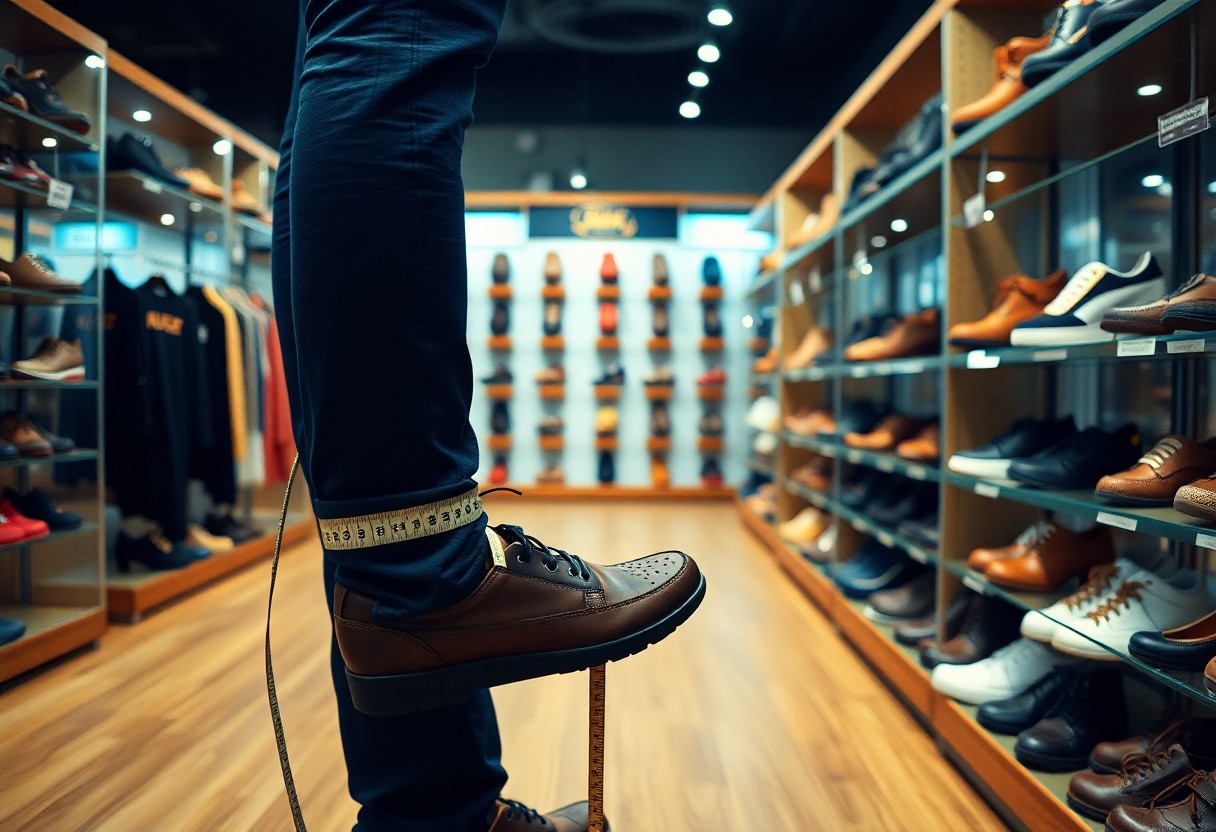
Understanding the intricacies of selecting the correct shoe size is crucial for maintaining optimal foot health. Wearing shoes that don’t fit well can lead to a range of issues, from minor blisters to severe long-term joint complications. Our feet bear the entire weight of our bodies, and poorly sized footwear can significantly impact our daily comfort, mobility, and overall quality of life. It is essential to identify the signs that indicate your footwear may not be fitting correctly to safeguard your foot health. Research shows that an astonishing 75% of individuals experience foot problems due to improper shoe sizing. This comprehensive guide will equip you with the tools needed to evaluate your current footwear and discover the ideal size tailored to your unique feet.

Identify Critical Warning Signs Indicating Ill-Fitting Footwear
Taking a proactive stance towards your foot health involves recognizing the key warning signs linked to ill-fitting shoes. Studies indicate that 60% of the population is currently wearing shoes that do not fit properly, which can lead to a variety of foot-related issues. Your footwear should provide sufficient space for your toes to move freely, offer proper arch support, and ensure consistent comfort throughout your day. Wearing shoes that are not appropriately sized can cause lasting damage to your feet and may even disrupt your natural walking mechanics.
Recognizing Physical Signs of Discomfort from Poor Fit
Physical indications that your shoes may not be fitting correctly include the appearance of blisters, calluses, and corns on your feet. You might observe redness or bruising on your toes, particularly after extended periods of walking or standing. Additionally, your toenails may appear damaged or discolored. If you notice these symptoms, it clearly indicates that your shoes could be either too tight or too loose, necessitating an urgent resizing.
Evaluating Comfort Levels for the Ideal Shoe Fit
Contrary to popular belief, new shoes should offer a comfortable fit from the moment you put them on. Your toes require ample space to move without constraint, and your heels must remain securely in place without slipping during walking. Experiencing pain or numbness in your feet is never normal and is a significant warning sign of an improper fit. Ensure your footwear provides adequate arch support and cushioning that caters to your specific foot requirements.
Conducting a thorough comfort assessment involves trying on shoes at various times of the day, as your feet naturally swell and change shape throughout the day. When fitting shoes, aim for about 3/8 to 1/2 inch of space between your longest toe and the front of the shoe. Walk on different surfaces to thoroughly evaluate comfort levels. If you encounter any discomfort or pressure points, it may be time to explore different sizes or styles to achieve the best fit.

Master the Techniques for Accurately Measuring Your Feet to Find the Right Shoe Size
Obtaining the correct shoe size hinges on the precise measurement of both feet. It’s important to recognize that your feet may vary in size by as much as half a size, and their dimensions can fluctuate throughout the day. For the most accurate measurement, it is best to measure your feet in the afternoon, when they are likely to be slightly swollen, ensuring that you achieve the most comfortable fit possible.
Utilizing Professional Measurement Methods for Precision
Professional shoe fitting typically employs a Brannock Device, which accurately measures your foot’s length, width, and arch length. This comprehensive three-dimensional measurement is vital for determining your precise shoe size. A trained shoe fitting specialist will measure both feet while you stand, considering weight distribution and the natural spreading of your feet when under load.
Employing At-Home Sizing Techniques for Accuracy
To measure your feet from the comfort of your home, place a piece of paper on a level surface and trace the outline of your foot while in a standing position. Measure the distance from your heel to your longest toe and the width at the widest point. To ensure sufficient room for toe movement and overall comfort, it’s advisable to add an extra 3/8 inch to these measurements.
To improve the accuracy of your at-home measurements, it’s best to measure your feet in the evening while wearing the socks you plan to use with your new shoes. Ensure there’s a thumb’s width of space between your longest toe and the tip of the shoe; this allowance is crucial to prevent toe injuries and support natural foot movement while walking.
Avoiding Common Pitfalls in Shoe Sizing
Many individuals mistakenly assume they know their correct shoe size, yet research shows that up to 60% of people wear shoes that do not fit properly. Common mistakes include clinging to the same shoe size over the years, neglecting width measurements, and overlooking size discrepancies between your two feet. Such oversights can lead to serious foot complications and significant discomfort.
Understanding Size Variations Across Different Shoe Brands
Variations in sizing among different shoe brands can greatly influence your comfort. For instance, a size 8 in one brand may correspond to a size 9 in another, due to differing manufacturing standards and design philosophies. Always try on shoes regardless of the size indicated on the label, as these differences can have significant implications for your foot health.
Choosing the Right Time for Shoe Shopping to Ensure the Best Fit
The timing of your shoe shopping is crucial. Your feet naturally swell throughout the day, expanding by as much as half a size larger by evening. Shopping in the afternoon provides the best opportunity to find a fit that accommodates your daily requirements.
Additionally, your feet may swell during physical activities or in warmer weather. Purchasing shoes too early in the day may result in footwear that feels tight and becomes uncomfortable later on. Always ensure there is a thumb’s width of space between your longest toe and the shoe’s tip when trying on new shoes in the afternoon.

The Major Health Implications of Choosing the Correct Shoe Size
Your choice of shoe size can have a significant impact on your overall health. Wearing shoes that do not fit properly can affect your entire body, from your toes to your spine. Research indicates that 72% of individuals experience foot-related health issues due to incorrect shoe sizes, which can lead to altered walking patterns and subsequent posture problems.
Immediate Health Effects of Wearing Poorly Fitting Shoes
In terms of immediate comfort and health, wearing the wrong shoe size can lead to blisters, corns, and painful pressure points. You may also encounter foot fatigue, strain in your ankles, and compromised balance. These issues can disrupt your daily activities, causing discomfort while walking, with 85% of individuals reporting immediate discomfort when wearing ill-fitting shoes.
Long-lasting Consequences of Wearing the Wrong Shoe Sizes
Continued use of shoes that do not fit properly can result in permanent foot deformities, including conditions such as bunions, hammer toes, and plantar fasciitis. Changes in your walking pattern may occur as you adjust to discomfort, potentially leading to knee, hip, and back issues. Research shows that 60% of chronic foot problems can be traced back to poorly fitting shoes.
The repercussions of wearing incorrect shoe sizes extend beyond foot health. You may experience poor posture, reduced mobility, and chronic pain. Medical studies indicate that proper shoe fit can prevent up to 80% of common foot issues and greatly enhance your overall quality of life. The footwear choices you make today can have lasting effects on your foot health for years to come.
Important Considerations for Different Life Stages and Health Conditions
It is vital to recognize that your feet require special attention during various life stages and health conditions. Factors such as age, weight fluctuations, and specific medical issues can significantly impact your shoe size. Regular foot measurements are essential, as wearing the incorrect size can lead to serious foot problems and reduced mobility.
Changes in Foot Size Related to Aging
Aside from the natural aging process, your feet can undergo substantial changes over time. As you age, your feet may become wider and flatter due to a decline in elasticity in tendons and ligaments. Research suggests that foot size can increase by half a size every decade after turning 40. It is wise to measure your feet annually to guarantee the right fit.
Health Conditions Affecting Shoe Size
Your health status significantly influences your shoe size. Conditions such as diabetes, arthritis, and edema can lead to noticeable foot swelling, requiring adjustments in shoe size. For individuals with such conditions, it is crucial to prioritize shoe fit to avoid complications.
Moreover, certain medications can also cause foot swelling as a side effect. Poorly fitting shoes may aggravate existing health issues and create new ones. For those with diabetes, regular foot inspections are essential, and it’s important to ensure that shoes provide adequate space and support. Research indicates that appropriate footwear can reduce the risk of diabetic foot complications by up to 50%.
Essential Tips for Successful Shoe Shopping
Despite widespread misconceptions, effective shoe shopping requires careful attention to detail. Your foot size can change throughout the day, making afternoon shopping the optimal choice when your feet are at their largest. As your feet naturally expand during daily activities, this timing will yield the most accurate fit measurements.
Key Tips for Achieving the Right Shoe Fit
Contrary to common belief, obtaining the right fit involves more than just length measurement. Here are essential considerations to ensure a proper fit:
- Ensure a thumb-width space exists between your longest toe and the shoe tip
- Confirm that <a href="https://limitsofstrategy.com/arch-support-essential-facts-about-shoe-necessities/">arch support</a> is appropriate for your foot type
- Try on shoes using your regular socks for the best fit
- Walk around to evaluate heel grip and overall comfort
Any discomfort experienced during the initial fitting is likely to worsen with wear, making it crucial to address these issues immediately.
Recognizing When to Replace Your Shoes for Health Reasons
It is essential to replace shoes when they show specific signs of wear. Look for worn treads, uneven sole wear, or when you have logged 400-500 miles in athletic footwear.
When your shoes exhibit these warning signs, don’t hesitate to replace them: visible creasing in the midsole, loss of cushioning, or wear in the interior lining. Your feet require reliable support every 8-12 months for everyday shoes, and even more frequently for athletic footwear. Continuing to wear worn-out shoes can lead to serious foot pain and injury.
Frequently Asked Questions About Shoe Sizing
Q: How can I determine if my shoes are too tight during daily activities?
A: Look out for these clear indicators: numbness or tingling sensations in your toes, blisters forming on your heels or toes, and visible red marks on your feet after removing your shoes. Your toes should have enough space to wiggle freely, and your heel should remain secure without slipping while you move. If you experience pressure points or discomfort after wearing shoes for just a few hours, it’s likely that your shoes are too tight.
Q: What is the best time of day for measuring foot size and trying on new footwear?
A: The ideal time to measure your feet and try on new shoes is during the late afternoon or evening. Feet naturally swell throughout the day, reaching their largest size by evening. This timing ensures that you select shoes that will fit comfortably even when your feet are at their fullest. Always remember to measure both feet, as one foot is often slightly larger than the other.
Q: How much space should exist between my longest toe and the front of the shoe?
A: You should allow for approximately 3/8 to 1/2 inch (or thumb width) of space between your longest toe and the shoe tip. This gap allows for natural foot movement while walking and helps prevent toe injuries. Your toes should never touch the front of the shoe while standing or walking. To check this, stand up and slide your finger behind your heel – it should fit snugly without feeling tight.
The Article How to know if you’re wearing the right shoe size signs and tips for a perfect fit appeared first on My Shoes Finder
The Article Signs and Tips for Knowing Your Right Shoe Size Was Found On https://limitsofstrategy.com
The Article Right Shoe Size: Tips and Signs to Find Your Fit First Appeared ON
: https://ad4sc.com


It’s interesting how often we overlook the impact of shoe sizing on our overall health. I remember a time when I ignored persistent discomfort in my favorite pair of shoes, attributing the pain to just a long day rather than considering the fit. Looking back, I realize that discomfort was my body’s way of signaling something deeper. It’s staggering that 75% of people experience foot problems due to improper sizing—yet, I wonder how many of us connect the dots between our footwear choices and long-term health consequences.
You bring up such a crucial point about footwear and its broader implications for our health. I used to think discomfort was just part of life—last summer, I was convinced my constant foot pain was just because I was on my feet more than usual. It wasn’t until I switched to a pair of shoes that were better suited to my foot shape that I realized how much of a difference proper sizing and support can make.
You hit the nail on the head with the foot discomfort saga. It’s wild how we often brush off our bodies screaming at us—turns out, those are not just symptoms of a busy life; it’s warning signs wearing a masquerade mask of fashion.